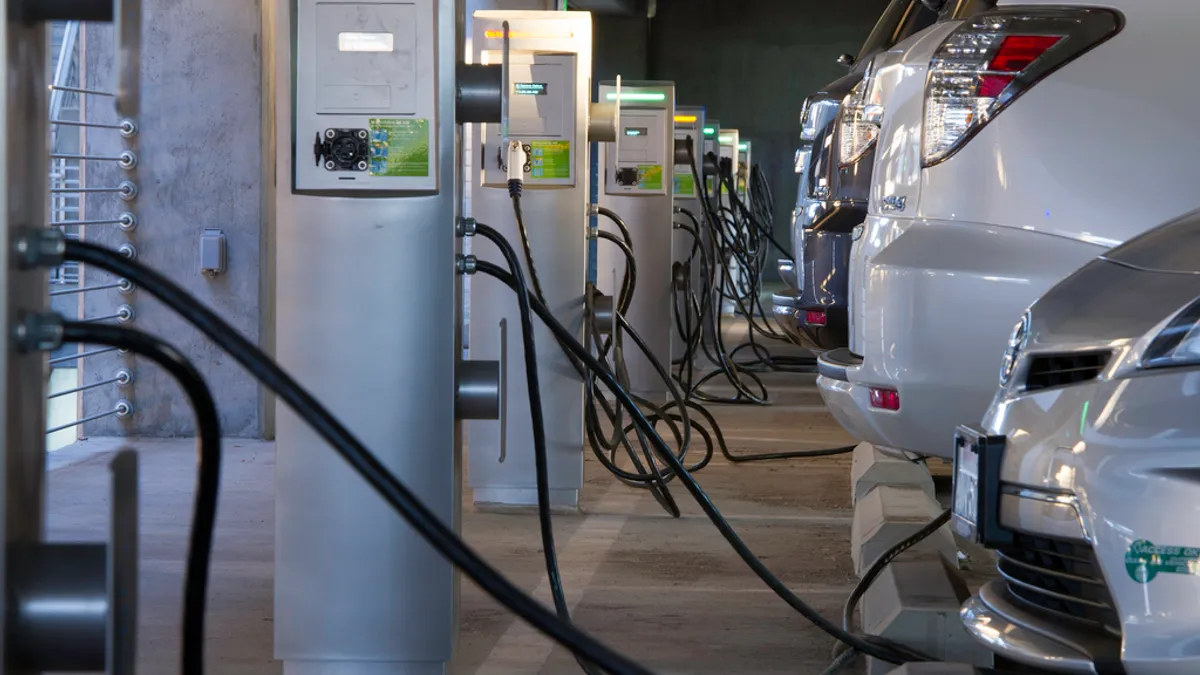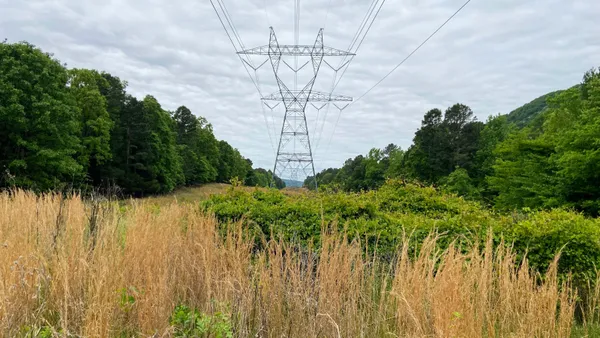Dive Brief:
- Congress should include support for medium and heavy-duty vehicle electrification in the infrastructure package now being developed, a group of corporate fleet owners with more than 1 million vehicles between them said in a July 14 letter to lawmakers.
- The Corporate Electric Vehicle Alliance, led by Ceres, recommended development of an investment tax credit or point of sale program to offset the cost of emissions free medium and heavy duty vehicles. The group includes Amazon, DHL, AT&T and other major corporations, along with utilities Exelon, Edison International, Consumers Energy and National Grid.
- But incentives will not be enough to fully integrate electric vehicles (EVs) into the grid, according to Jacqueline Piero, vice president of policy at Nuvve, which has developed a vehicle-to-grid (V2G) platform. "Subsidies are good, for kickstarting," she said Wednesday at the Intersolar 2021 Digital Summit. "We would much prefer the value streams to become accessible in order to have a viable market."
Dive Insight:
Major corporations are calling for Congress to support fleet electrification, and Senate Democrats are reportedly shoring up narrow support for a $3.5 trillion bill with a focus on climate change issues.
"As part of a 2021 infrastructure bill, Congress has the opportunity to adopt targeted policies that will significantly reduce greenhouse gas and criteria pollutant emissions from the freight and delivery sector," the corporations said in their letter.
President Joe Biden's American Jobs Plan included $174 billion for EVs, including chargers and vehicle purchase incentives. Senate Republicans countered with a plan that included $4 billion for electric transportation, while a bipartisan group of lawmakers have also been negotiating a package that would include EV spending.
Along with the incentive for medium and heavy duty vehicles, they advocated for expanding the investment tax credit for charging infrastructure and providing funding for public high-capacity charging stations for long-haul trucks.
"We share a common goal of electrifying our transportation and logistics fleets and networks," the companies said. "Strong policies will be necessary to effectuate this critical transition throughout the sector."
But those policies will need to go beyond incentives, said Piero.
Ultimately, the utility and EV industries see significant value in using the vehicles' batteries as grid resources: supporting resiliency, soaking up renewable generation, participating in demand response and providing power and services back to the grid. But EV equipment vendors say the early stages of transportation electrification have focused on one-way flows of electricity to charge vehicles, and regulations should begin to recognize their full potential in order to bring down costs and speed adoption.
"We don't want to have to base an industry on subsidies," said Piero. "We would much rather that those be the springboard."
There are signs globally and in the U.S., that utilities are preparing for EVs as a grid resource, said Piero. In Europe, some utilities are including EVs in long-term resource plans, and in London a local distribution market for voltage support is being developed with EVs participating, she said. In Denmark, EVs are acknowledged in smart inverter standards.
In California, regulators determined V2G resources can be interconnected using existing storage rules and in Colorado V2G is also now part of interconnection rules. "We see more and more opportunity in the regulatory sphere," said Piero. There are calls for similar rules in other states as well, she said.
As the federal government looks to invest in transportation electrification, in its own fleet and through block funding to states, Piero said it is important to "go ahead and include some kind of allowance for these capabilities ... This has to be done now, with intent."
Since its December vote creating a framework for vehicle-grid integration in the state, the California Public Utilities Commission has held meetings on increasing the use of EVs for demand response, Ed Pike, senior utilities engineer at the commission, said at the Intersolar event.
Utilities have also held workshops on vehicle-grid integration pilots, and "we expect to get those pilot ideas later this week," he said. IOUs can collectively request up to $35 million for the pilots.
Once rules are in place to allow, in California and elsewhere, for EVs to participate in electricity markets or power a home, "value creation is going to be really addictive to a lot of stakeholders," said David McCreadie, EV data and energy services manager at Ford Motor Co.
Ford unveiled its F-150 Lightning in May, and is partnering with Sunrun on an inverter and integration system to allow the electric truck to power a home. But, utility rules will need to be crafted in order to allow for use of that functionality.
"The automakers certainly realize these vehicles and the storage contained by the batteries are huge assets," McCreadie said. As EV ranges grow, "these vehicles are only going to be using a fairly small portion of their battery each day for mobility. That presents a huge opportunity to leverage these vehicles as assets to the grid and even to the customer themselves."















